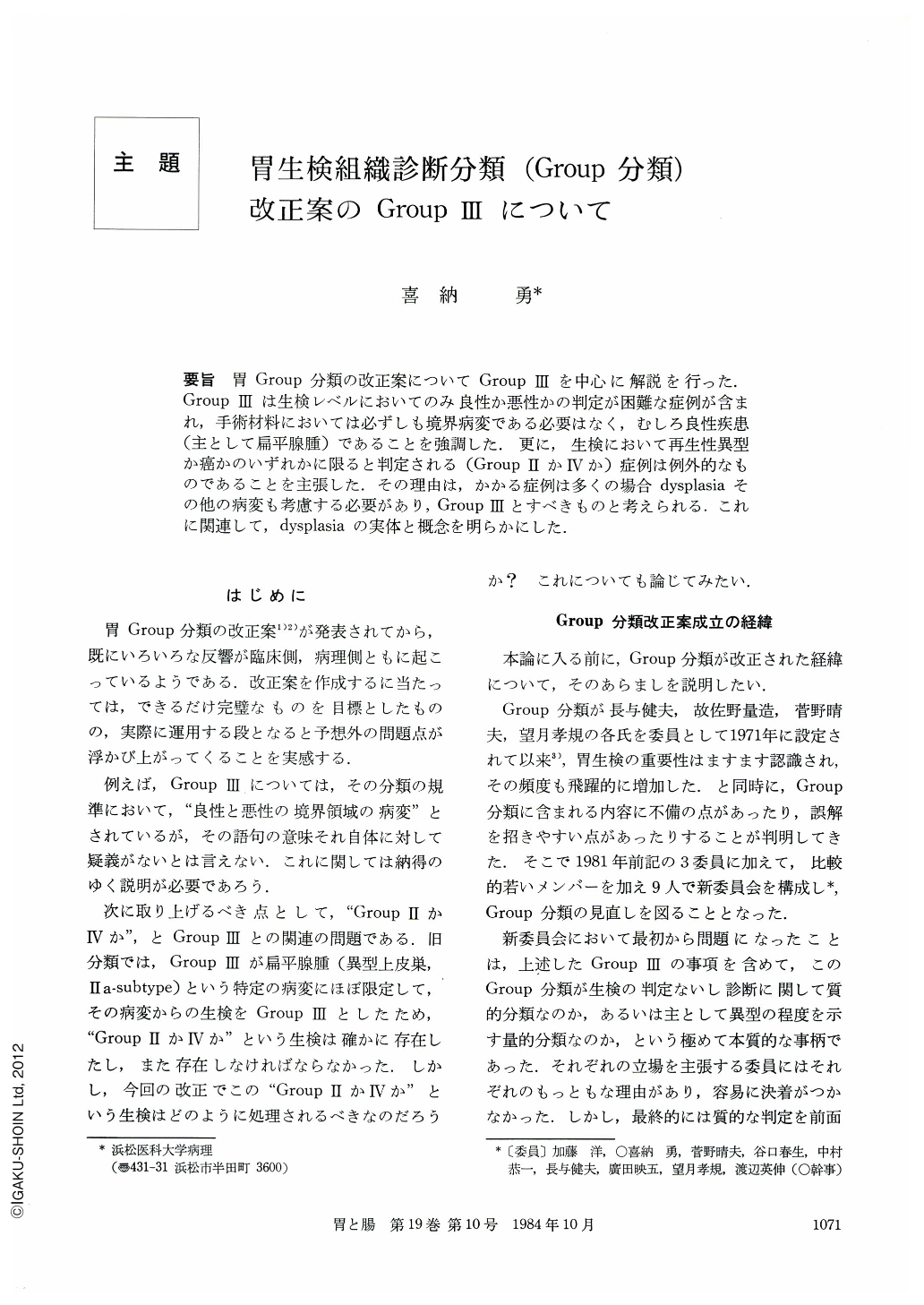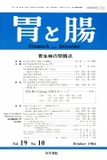Japanese
English
- 有料閲覧
- Abstract 文献概要
- 1ページ目 Look Inside
- サイト内被引用 Cited by
要旨 胃Group分類の改正案についてGroupⅢを中心に解説を行った.GroupⅢは生検レベルにおいてのみ良性か悪性かの判定が困難な症例が含まれ,手術材料においては必ずしも境界病変である必要はなく,むしろ良性疾患(主として扁平腺腫)であることを強調した.更に,生検において再生性異型か癌かのいずれかに限ると判定される(GroupⅡかⅣか)症例は例外的なものであることを主張した.その理由は,かかる症例は多くの場合dysplasiaその他の病変も考慮する必要があり,GroupⅢとすべきものと考えられる.これに関連して,dysplasiaの実体と概念を明らかにした.
Group classification of gastric biopsy interpretation has been revised about ten years after the first establishment as the following.
Group Ⅰ: Normal mucosa and benign lesions without atypic. Normal gastric mucosa, gastric mucosa with intestinal metaplasia and other benign lesions without atypic.
Group Ⅱ: Lesions showing atypic but diagnosed benign. Gastric mucosa with intestinal metaplasia with atypic and other benign lesions accompanied by atypic.
Group Ⅲ: Borderline lesions between benign and malignant. Lesions which are difficult to diagnose benign or malignant in terms of cellular and structural atypic.
Note: When a lesion is diagnosed as Group Ⅲ, that diagnosis should be confirmed by rebiopsy or other procedure as much as possible.
Group Ⅳ: Lesions strongly suspected of cancer. Lesions which are strongly suspected of cancer but cannot be definitely diagnosed as cancer.
Note 1: This group contains such cases that the amount of epithelium suspected of cancer is too little or the epithelium is too severely damaged to make a definite diagnosis.
Note 2: When a lesion is diagnosed as Group Ⅳ, it is desirable to make a definite diagnosis by performing rebiopsy if possible.
Group Ⅴ. Cancer. Lesions which can be definitely diagnosed as cancer.
Note: As for the lesions of this group, it is desirable to describe the histological type of cancer additionally.
Interpretation as Group Ⅲ is made in the gastric lesions such as adenoma, dysplasia or “borderline lesions” which are difficult to determine whether benign or malignant. Rebiopsy should be performed in such cases to get a definite diagnosis. Therefore, diagnosis of these “borderline” cases can be finally adenoma, dysplasia or erosive-regenerative change, or exceptionally adenocarcinoma.
Interpretation as Group Ⅱ is made mainly in the atypical epithelia related to erosion and/or its regenerative process.

Copyright © 1984, Igaku-Shoin Ltd. All rights reserved.


